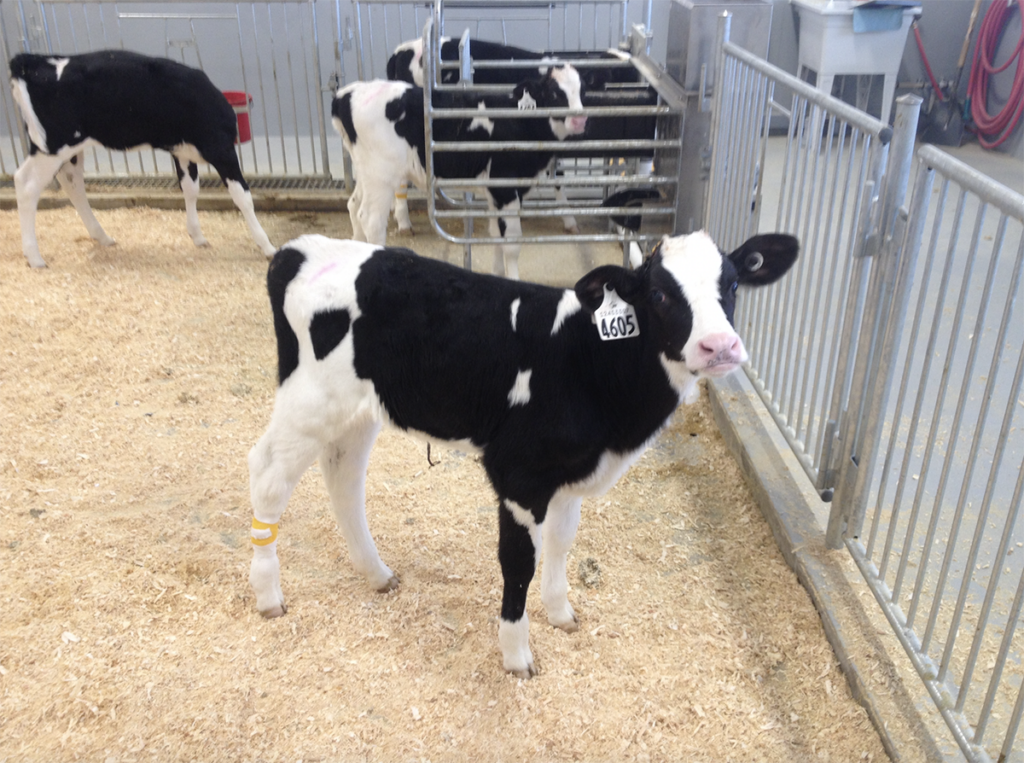DISBUDDING GUIDE
Welcome to the guide to disbudding! The following pages will walk you through when to disbud your dairy calves, what tools you will require, and the steps involved in a successful disbudding event.
Share this:
OVERVIEW
WHAT IS DISBUDDING AND DEHORNING?
Calves are born with horn buds, which grow into horns that attach to the skull around 3 to 4 months of age. Removal of the horn forming tissue before attachment to the skull is referred to as ‘disbudding’, whereas removal of a horn is called to as ‘dehorning’. Sometimes people use the term ‘dehorning’ to mean both disbudding and dehorning. Actual dehorning is a more invasive procedure compared to disbudding methods. Dehorning calves should be avoided.
Disbudding can be done by one of two methods – cautery (iron) or caustic paste. The both work similarly to destroy the horn producing tissue in the horn bud. Cautery works by causing a thermal burn to the tissue, while caustic paste cases a chemical burn. There is no clear evidence one method is superior to the other – both require full pain control and appropriate training for the operator.

PAIN CONTROL
Why is it important to provide pain control while disbudding?
Pain control for disbudding is a required part of the proAction animal care assessment (Canada), as well as the FARM program (USA). Best practices for pain control include use of both a local anesthetic (such as lidocaine) and a non-steroidal anti-inflammatory drug (NSAID), such as meloxicam, flunixin, or ketoprofen. Use of these drugs together substantially reduces pain during the disbudding process, and improves ease of handling of calves, further reducing stress. Watch the following videos to see the difference between calves disbudded with appropriate pain control, and those without.
WHEN TO DISBUD
At what age should I disbud my calves?
Calves should be disbudded well ahead of weaning. This allows for disbudding to occur, rather than dehorning, and give them time to heal and recover prior to weaning. Decoupling stresses at weaning can help calves stay healthy and grow better during this period.
Is there too young of an age?
As long as the operators is confident locating the horn buds, it is safe to disbud calves – there isn’t a ‘too early’ time. It is best to discuss with your veterinarian when is appropriate to perform disbudding on your farm. While some industry organizations have recommended disbudding earlier in the pre-weaning period (eg. CVMA, AVMA), there is little evidence to support this.
The best time to disbud is generally between birth and six weeks of age, at a time when calves are healthy and the operator is confident in their method and handling practices.

TOOLS + EQUIPMENT
Supplies:
- Calf halter(s)
- Disbudding iron or caustic paste
- Vinegar (if using caustic paste)
- Petroleum Jelly (if using caustic paste)
- Antibacterial product
- Gloves
- Scissors or clippers (clipping the hair around the horn bud can make it easier to see)
- Needles
- 18- (or 20-) gauge x 1.5”
- 22- (or 20-) gauge x 1”
- Syringes
- 10 to 12 mL (for lidocaine)
- 3 to 5 mL (for NSAID)
- Drugs
- 2% Lidocaine HCl (with or without epinephrine)
- NSAID (meloxicam, flunixin, or ketoprofen)
- Sedative (e.g. xylazine) (optional)
Best Practices:
- Always use a clean needle to puncture a bottle.
- Change the needle on the syringe between calves.
- Use one pocket for clean needles and another for dirty needles.
- Store drugs according to the label and out of direct sunlight.
DISBUDDING IRONS
Types of disbudding tools:
- There are different brands of gas-powered burners available. These typically have a sharp tip, which can be used to physically remove the horn bud after burning.
- Electric disbudding irons can also be used. These typically have a blunt tip, and cannot be used to physically remove the horn bud. When using these irons, ensure a copper ring is present after burning. This ensures an adequate burn to prevent growth.
CAUSTIC PASTE
Caustic paste is commercially available and can be purchased in a tub, squeeze tube, or stick. After application, it takes several minutes to start it’s effect, and continues to be active until dry. As a result, it is important to monitor calves to make sure they do not smear the paste onto other parts of the body (eg. in their eyes), or onto other calves. Vinegar will neutralize the paste, and can be used to wipe paste off of if it has been smeared, or to flush your own skin if you accidently have contact with the paste.
DRUGS
2% Lidocaine HCl
Use: Nerve block; reduces the acute pain during the disbudding process
Administered using a 12 mL syringe with 18- (or 20-) gauge needle x 1.5”
5 mL per horn (per side)
This must be purchased from your veterinarian.There are two types available; one with epinephrine and one without. Epinephrine is a vasoconstrictor (reduces the diameter of blood vessels) which helps keep the lidocaine in close proximity to the injection site (preferred). Lidocaine can also be buffered with sodium bicarbonate to lessen pain on injection – speak to your veterinarian for more information.
A lidocaine nerve block is an essential part of pain control for both caustic paste and cautery disbudding (Winder et al., 2017; Winder et al., 2018; Reedman et al., 2020).
NSAID – meloxicam, flunixin, or ketoprofen
Use: Pain management; reduces the inflammatory pain occurring after disbudding.
Administered according to label (e.g. subcutaneous, oral).
It is clear that both cautery and caustic paste disbudding cause inflammatory pain, which is have shown that the use of a NSAID in addition to a local pain block can further reduce pain as well as improve performance (greater weight gain) post-disbudding. (Faulkner and Weary, 2000; Stilwell et al., 2009; Winder et al., 2018; Reedman et al., 2020).
